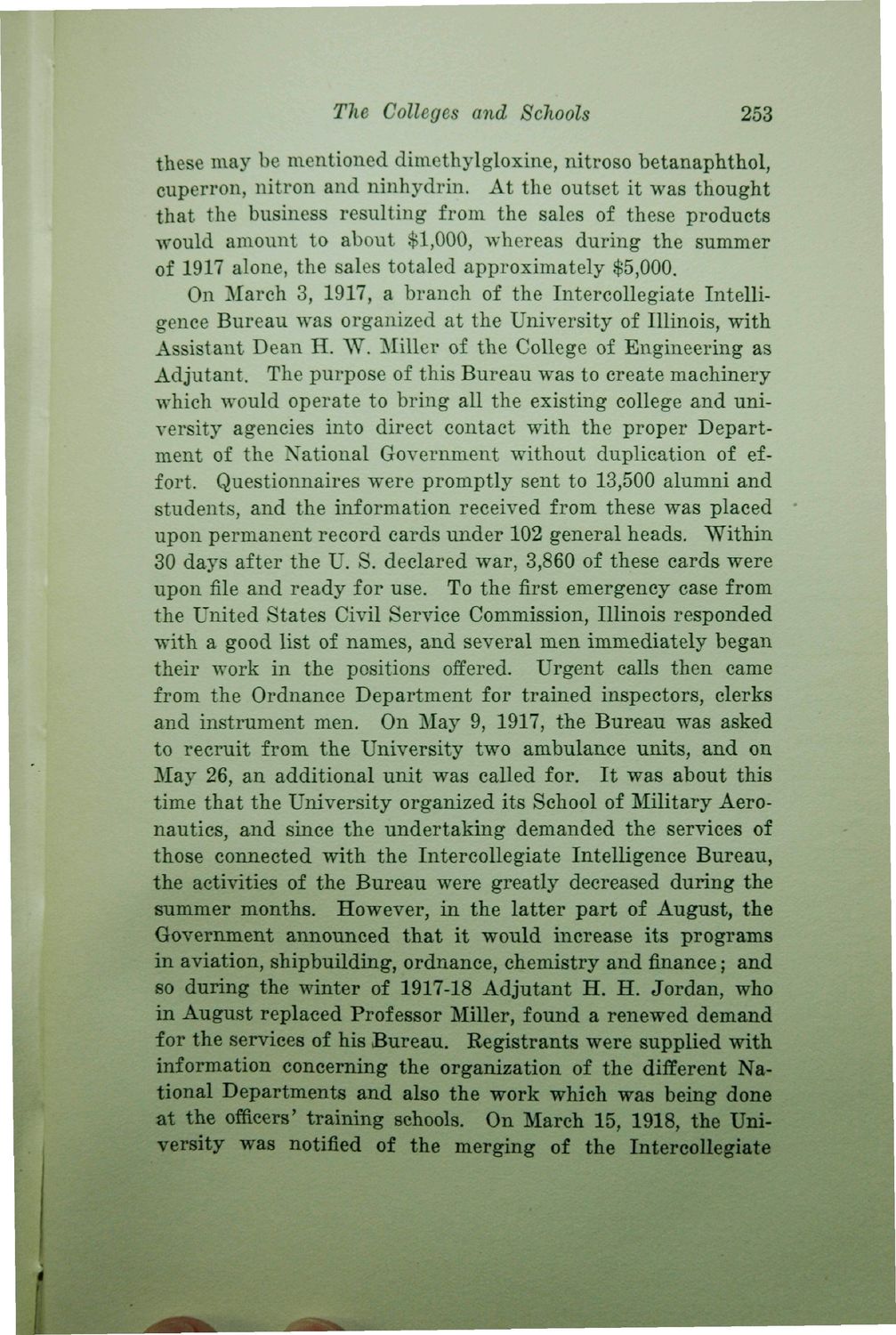| |
| |
Caption: Book - 16 Years (Edmund James)
This is a reduced-resolution page image for fast online browsing.

EXTRACTED TEXT FROM PAGE:
The Colleges and Schools 253 these may be mentioned dimethylgloxine, nitroso betanaphthol, cuperron, nitron and ninhydrin. At the outset it was thought that the business resulting from the sales of these products would amount to about $1,000, whereas during the summer of 1917 alone, the sales totaled approximately $5,000. On March 3, 1917, a branch of the Intercollegiate Intelligence Bureau was organized at the University of Illinois, with Assistant Dean H. W. Miller of the College of Engineering as Adjutant. The purpose of this Bureau was to create machinery which would operate to bring all the existing college and university agencies into direct contact with the proper Department of the National Government without duplication of effort. Questionnaires were promptly sent to 13,500 alumni and students, and the information received from these was placed upon permanent record cards under 102 general heads. Within 30 days after the U. S. declared war, 3,860 of these cards were upon file and ready for use. To the first emergency case from the United States Civil Service Commission, Illinois responded with a good list of names, and several men immediately began their work in the positions offered. Urgent calls then came from the Ordnance Department for trained inspectors, clerks and instrument men. On May 9, 1917, the Bureau was asked to recruit from the University two ambulance units, and on May 26, an additional unit was called for. It was about this time that the University organized its School of Military Aeronautics, and since the undertaking demanded the services of those connected with the Intercollegiate Intelligence Bureau, the activities of the Bureau were greatly decreased during the summer months. However, in the latter part of August, the Government announced that it would increase its programs in aviation, shipbuilding, ordnance, chemistry and finance; and so during the winter of 1917-18 Adjutant H. H. Jordan, who in August replaced Professor Miller, found a renewed demand for the services of his Bureau. Registrants were supplied with information concerning the organization of the different National Departments and also the work which was being done at the officers' training schools. On March 15, 1918, the University was notified of the merging of the Intercollegiate i
| |